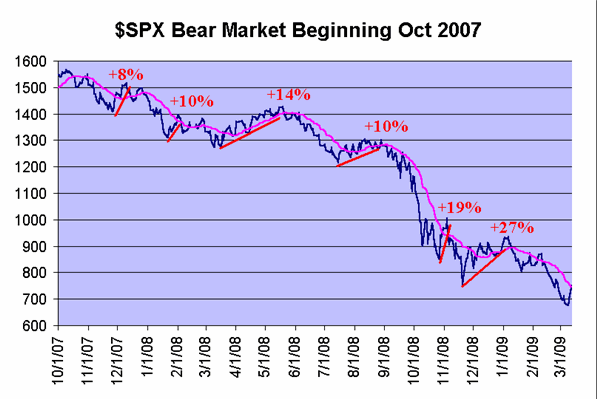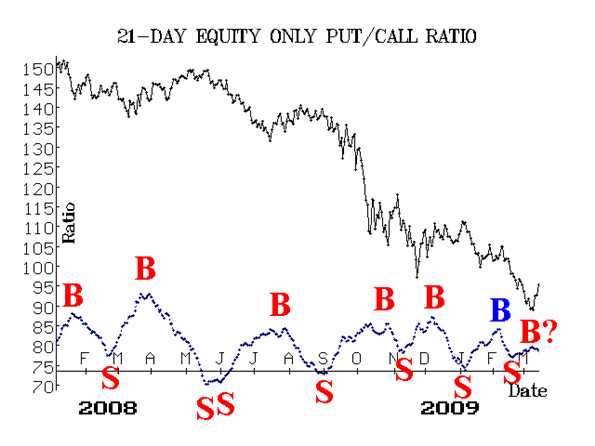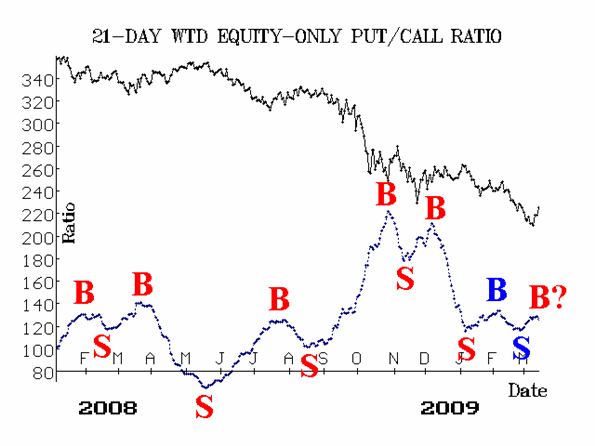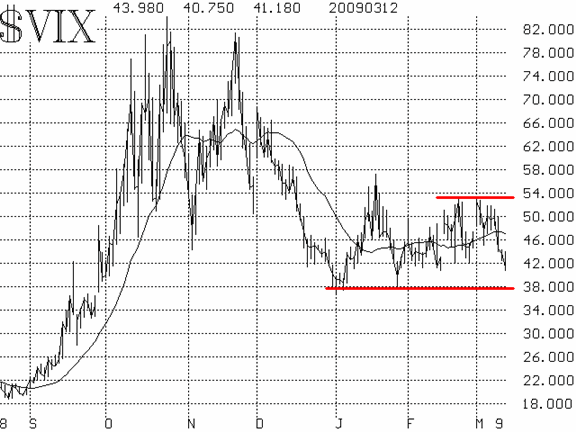| The McMillan Options Strategist Weekly |
| By Lawrence G. McMillan |
Published
03/13/2009
|
Options
|
Unrated
|
|
|
|
The McMillan Options Strategist Weekly
An oversold rally of major proportions is underway. These tend to run out of steam in 3 to 6 days at, or just above, the declining 20-day moving average. In terms of $SPX, that moving average is now just below 750, and $SPX closed just above that level today -- the third day of rally. It's what happens after that, that determines whether it's just an oversold bounce or the beginning of an intermediate-term rally. After the 3-to-5 day rally, the market will decline. If it declines all the way to and even below the recent lows right away, then the rally was nothing more than an oversold bounce. However, if it pulls back only part of the way towards those lows, then rallies and exceeds the high, a pattern of higher highs and higher lows is established, and thus an intermediate-term rally is underway.

The equity-only put-call ratios appear to be beginning to roll over to buy signals, which would augur for the "intermediate-term" interpretation for this rally. However, as you can see from figures 2 and 3, these normally reliable indicators have been struggling lately. The signals marked in red were accurate signals. However, those marked in blue were not -- and they include some of the recent signals. This main reason that put-call ratios fail to reflect the contrary moods is that hedging or arbitrage activity has distorted them. That is not usually a major concern for these very broad-based ratios, but it seems to be the case at this time.

Market breadth was the main indicator that this rally was forthcoming. It didn't pinpoint the beginning of the rally of course, but the fact that the breadth was so negative indicated that the chances of a sharp, but possibly short-lived, rally were increasing.

Volatility indices ($VIX and $VXO) have been rather dull. They did not rise much during the 200-point decline in $SPX and they haven't fallen much in the 90-point rally this week. $VIX has been range-bound, between 38 and 53 for some time now. As a result, it is neutral as far as predicting the market. A breakout of that range would potentially be significant. Thus, a decline below 38 by $VIX would be a buy signal, and would bolster the intermediate-term rally case.

So, what does this all add up to? There are new buy signals in the breadth oscillators and probably in the put-call ratios. $VIX is neutral, and the $SPX chart is still bearish (as it is trending downward, with declining moving averages, and overhead resistance). Our best estimate is that $SPX will soon pull back. If it drops right back to the lows, then all bullish bets are off. However, if it establishes a higher low, it would then try to make a
higher high. That would turn the $SPX chart bullish. As that is happening, if $VIX falls below 38, that would add another bullish indicator. It seems as if that's a lot of work to get everything into synch on the bullish side, but it is likely what's required.
We have seen this scenario before in this bear market, and it doesn't end pleasantly. Eventually, the lows are retested and broken. So, even if this is an intermediate-term rally that carries 25% to 30% off the lows, we continue to feel they will be retested. Hence only short-term traders can take advantage of the advance. Those with a longer-term view should rather sell into the intermediate-term rally if it does develop.
Lawrence G. McMillan is the author of two best selling books on options, including Options as a Strategic Investment, recognized as essential resources for any serious option trader's library.
|